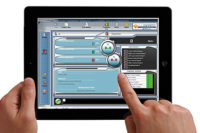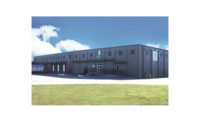Inspection systems adapt to needs of beverage market
High speeds, diverse bottle shapes impact packaging equipment

Thanks to the rise of social media, it’s now easier than ever for consumers to share their experiences with brands. A positive experience essentially acts as free marketing for a brand. However, a negative experience regarding a package’s safety can be enough to damage a brand’s reputation.
“With the rise in popularity of social media channels, consumers have become increasingly educated and aware of all safety failures within the industry,” says Christian Beck, senior product manager for Filtec, Torrance, Calif. “With so many different segments and competitors, this often leads to a decrease in the brand following and an increase in the demand for stricter quality inspections.”
As a result, beverage manufacturers are investing in automated inspection solutions throughout the production process to ensure their beverages are safe. Although detecting foreign objects is one important job of inspection equipment, much more is involved throughout the inspection process. For instance, beverage-makers must ensure their products are free from contaminants and defects, not overfilled or underfilled, sealed with the correct closure, labeled correctly, and outfitted with the correct barcode and date code, Beck explains.
As consumers call for stricter quality inspections, beverage-makers have a growing need for greater accuracy at high speeds on their production lines, Filtec’s Beck says. In fact, he says speed is one of the driving trends in the industry.
Overall line speeds are increasing as filling lines and capping equipment evolve and become more efficient, notes Robert Chevalier, engineering manager for Teledyne TapTone, North Falmouth, Mass. As a result, inspection sensors are being required to keep up with these higher speeds.
Filtec provides inspection solutions for empty and full containers, including fill level and cap inspection, pressure detection, vision inspection and case inspection.
“Automated vision inspections verify product quality at high rate-of-production line speeds,” Filtec’s Beck explains. “The software and automation increase operational efficiency, reduce rework costs and minimize recalls.”
Teledyne TapTone has designed its leak inspection systems with custom technology to meet the need for increased line speeds, Chevalier notes.
“Teledyne TapTone uses a state-of-the-art custom Digital Signal Processor (DSP) technology for high-speed signal processing of the inspection sensor signals,” Chevalier explains. “We can process up to 32 analog sensor inputs at one time with this high-speed processor. This allows us to run multiple inspection algorithms in each sensor at very high speeds.
“To communicate with this high-speed processor, we use a color touchscreen industrial PC with our own Windows 7 embedded GUI user interface,” he continues. “The PC user interface has icon-based menu buttons similar to your everyday cell phone, which makes it easy for operators to use the system with recognizable buttons. The software development time is reduced when using a PC-based user interface, which makes it easy to add new features as customers request more functionality in their leak inspection systems.”
As beverage-makers use new shapes and sizes of containers to differentiate themselves in the marketplace, inspection equipment functionality — and, therefore, flexibility — increasingly becomes important, experts say.
“New beverage container styles and shapes continue to evolve and seem to appear daily on the store shelves to appeal to the consumer,” Chevalier says.
Filtec’s Beck agrees, adding: “With the arrival of several new consumer trends, the packaging industry has become a highly competitive market. Today, more than ever, beverage companies need to differentiate themselves by creating distinctive and unique container shapes.”
Yet, uniquely shaped bottles can make the inspection process more complex, they add.
“Inspection equipment suppliers need to be ready to face this exciting challenge with highly adaptable systems capable of inspecting the most intricate shapes,” Filtec’s Beck says.
For example, some inspection technology relies on compressing plastic bottle side walls to determine the seal integrity, explains Teledyne TapTone’s Chevalier. Therefore, the company developed a variety of special belt designs to meet the needs of uniquely shaped bottles.
To ensure that a bottle can fully and properly be inspected, beverage-makers should consult with an inspection equipment manufacturer before a bottle’s design is finalized, Chevalier suggests.
Additionally, inspection equipment must be flexible enough to implement evolving requests from beverage-makers.
“TapTone systems allow for maximum flexibility and rapid product changeover to accommodate the ever-evolving requirements of consumer beverage containers,” Chevalier says. BI
Looking for a reprint of this article?
From high-res PDFs to custom plaques, order your copy today!







